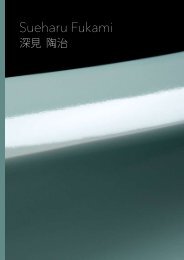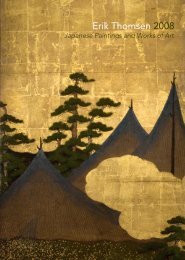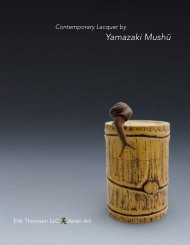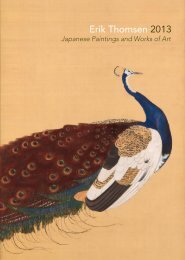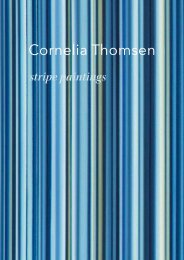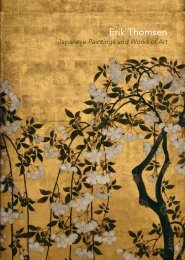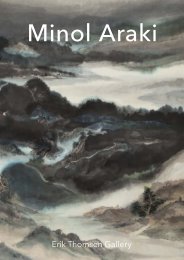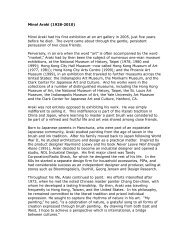View publication (pdf file 6.5 mb) - Erik Thomsen
View publication (pdf file 6.5 mb) - Erik Thomsen
View publication (pdf file 6.5 mb) - Erik Thomsen
- No tags were found...
You also want an ePaper? Increase the reach of your titles
YUMPU automatically turns print PDFs into web optimized ePapers that Google loves.
The artist was clearly interested in the inner networksof the city and delighted in his ability to depict asmuch information as possible through shadows.This he does in a remarkably complex way. We seethe different professions: geisha (elaborate hairdecorations), samurai (two swords), blind masseurs,itinerant monks, porters, prostitutes, palanquincarriers, travelers, guides, merchants, waitressesand even two dogs. The lanterns are likewisedifferentiated, with the marks of daimyo, temples,firefighter groups, restaurants, and food vendors.The artist seems to have had a soft spot for eatingestablishments, as we see them in grand detail,from a fine two-storied restaurant in the middle(the Iroha いろは establishment) to a ramen noodleshop and other eating stalls in the center. Restaurantswere at the time not only places to eat, butwere also places to gather for entertainment or othercultural activities, such as poetry groups or salesof art, and they frequently became the subjectmatter for paintings or prints. 4 This painting showsan unusual example of a high-class restaurant infull operation against the approaching inferno onthe horizon. 5The prodigious amount of information conveyed byshadows reflects a strong interest in the tradition ofshadow pictures. These types of shadow paintings,or kage-e 影 絵 became popular during the 18th and19th centuries and appear in a nu<strong>mb</strong>er of permutations,including early woodblock prints by ToriiKiyonaga (1799), Dutch shadow prints by JippenshaIkku (1810), parlor game prints of Hiroshige from1842, and death portraits by Shibata Zeshin (1867). 7The artist Kishi Chōzen is presently unidentified, butthis may be due to a nu<strong>mb</strong>er of factors, includingthe possible need for anonymity in describing withgreat detail a scene that led to great destruction.Possible candidates are lesser-known me<strong>mb</strong>ers ofthe Kishi painting school, or a talented monk affiliatedwith the temple Chōzenji 長 善 寺8in Edo. Anotherpossibility is Chisen Daigu 智 仙 大 愚 (ac. mid19th century), a poet in the Yanaka 谷 中 district ofEdo. He was active in the cultural circles of Edo inthe mid-nineteenth century and went by the nameof Chōzen 長 善 . 9 In any case, the artist certainly hadgreat talent and familiarity with the organizationswithin the city, especially that of its firefighters: thedetails are remarkable, and the skill undeniable.We also get an indication of how a later owner ofthe painting placed great value on this rare paintingby mounting the painting in rare imported stenciledcotton textile that was likely brought to Japanby Dutch traders in Dejima.Another aspect of Edo food culture can be seenin the booths of soba sellers in the center and thevery bottom of the painting. Both of the soba sellersare labeled Nihachi 二 八 and are thus the sameestablishment. The »Nihachi« also refers to a specialkind of soba (called the Nihachi) that was introducedin 1716 and became enormously popularin Edo during the mid- and late Edo period. 6 Thesoba was made on the spot and served hot, in factwhat we can see happening in the painting.62



